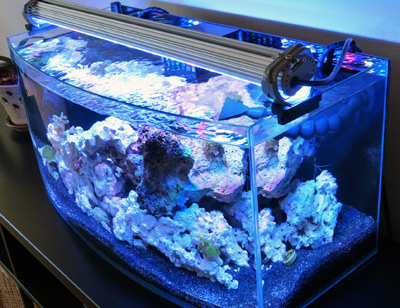In a nutshell, the reason people are drawn to this hobby (not counting the genetic mutation unique to marine aquarists that I can only assume researchers are close to isolating) is to enjoy up-close-and-personal encounters with exotic marine life. In other words, the whole point of this crazy venture of ours is to acquire specimens for our tanks so we can spend as much of our free time as possible viewing and appreciating them—just as the point of taking up golf is to go golfing as often as possible.
But one significant difference between aquarium keeping and many other pursuits is that there are certain times when it’s decidedly not in your best interest to engage in one of the core aspects of the hobby—the livestock-acquisition part, that is.
Here are five circumstances in which adding another animal is precisely the wrong thing to do. You’ll notice I’ve targeted this post at beginners, but even experienced hobbyists sometimes forget these points or get impatient and add specimens when they really shouldn’t.
1. Before cycling is complete
When cycling a new system, you should observe subsequent spikes and declines in ammonia and nitrite levels and then gradual accumulation of nitrate. Only after ammonia and nitrite have spiked and then dropped to zero—and stayed there steadily—is it safe to begin adding livestock.
2. Following any disruption in biofiltration
The appearance of ammonia or nitrite in an established (read: already cycled) aquarium indicates that either the system’s biofiltration capacity has been disrupted in some manner or the bioload has increased beyond the biofilter’s ability to keep pace with the resultant waste products. In any case, adding another animal before this situation is resolved is just “throwing fuel on the fire” and sure to result in livestock losses.
3. Following any mysterious death
After a fish or invertebrate dies, it’s human nature to think in terms of getting a replacement for it. But if you don’t first ascertain and rectify the cause of the original specimen’s death—whether it was an environmental issue, disease, tankmate aggression, jumping from the tank, or what have you—the replacement specimen could very well be doomed to suffer the same fate.
4. During a compatibility crisis
Here I’m thinking primarily of two or more fish that are seriously at each other’s throats, not just having the occasional dust-up. This circumstance creates a high-stress environment for all the fish in the tank, and introducing more livestock at this point could just make matters worse by adding yet another piece to the compatibility puzzle.
5. When your bioload is already maxed out
A tank that is already crowded with fish and/or invertebrates (and thus has very little remaining real estate for fish to claim or corals to be placed upon while allowing proper spacing between specimens) and is always flirting with nitrate/phosphate overload is not calling out for one more specimen! In fact, just the opposite may be true—that you need to divest your tank of a specimen or two.
What circumstance would you add?
Of course, there are circumstances beyond the five I’ve listed here in which adding livestock is a big no-no. If you can think of one to add, please share it in the comment section below.



